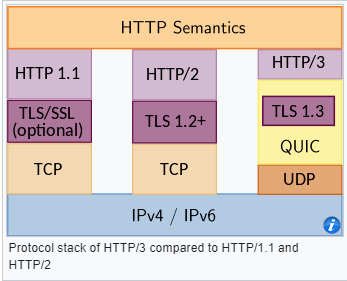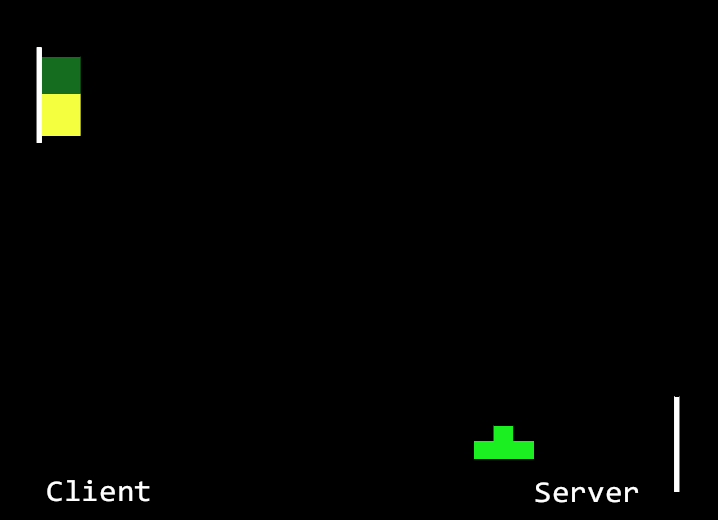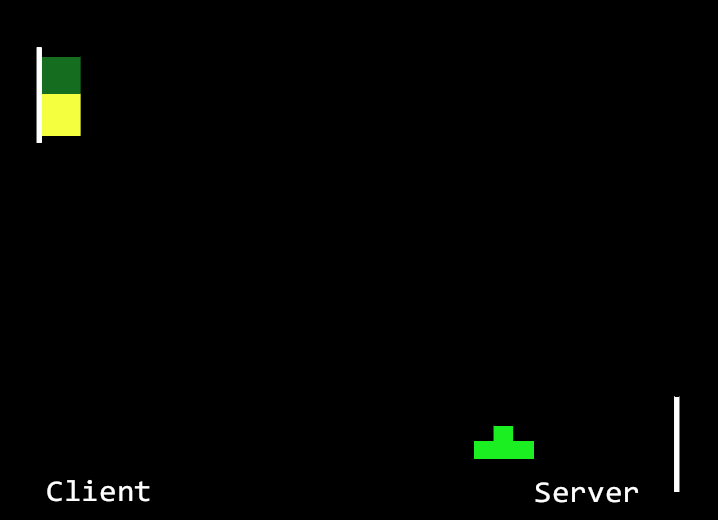无编辑摘要 |
无编辑摘要 |
||
| 第3行: | 第3行: | ||
* [https://datatracker.ietf.org/doc/html/rfc9114 RFC9114] | * [https://datatracker.ietf.org/doc/html/rfc9114 RFC9114] | ||
[[Image:HTTP semantics.png| | [[Image:HTTP semantics.png|400px]]<ref>https://nestify.io/blog/http-3-everything-you-need-to-know/</ref> | ||
= Overview = | = Overview = | ||
2024年1月19日 (五) 03:35的版本
HTTP/3 is the third major version of the Hypertext Transfer Protocol used to exchange information on the World Wide Web, complementing the widely-deployed HTTP/1.1 and HTTP/2. Unlike previous versions which relied on the well-established TCP (published in 1974), HTTP/3 uses QUIC, a multiplexed transport protocol built on UDP. On 6 June 2022, IETF published HTTP/3 as a Proposed Standard in RFC 9114.
Overview
HTTP/2 vs HTTP/3
One of the main touted advantages of HTTP/3 is increased performance, specifically around fetching multiple objects simultaneously. With HTTP/2, any interruption (packet loss) in the TCP connection blocks all streams (Head of line blocking). Because HTTP/3 is UDP-based, if a packet gets dropped that only interrupts that one stream, not all of them.
In addition, HTTP/3 offers 0-RTT support, which means that subsequent connections can start up much faster by eliminating the TLS acknowledgement from the server when setting up the connection. This means the client can start requesting data much faster than with a full TLS negotiation, meaning the website starts loading earlier.[2]
HTTP2:
HTTP3:



